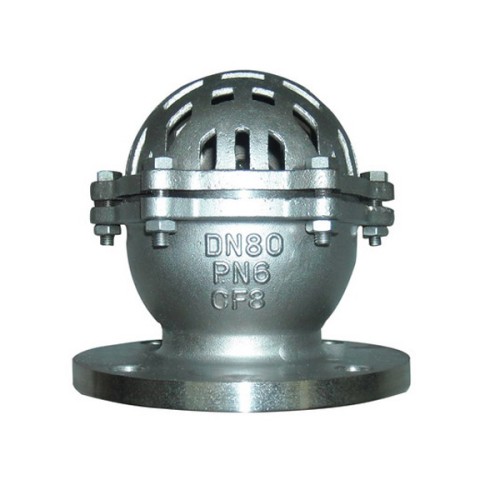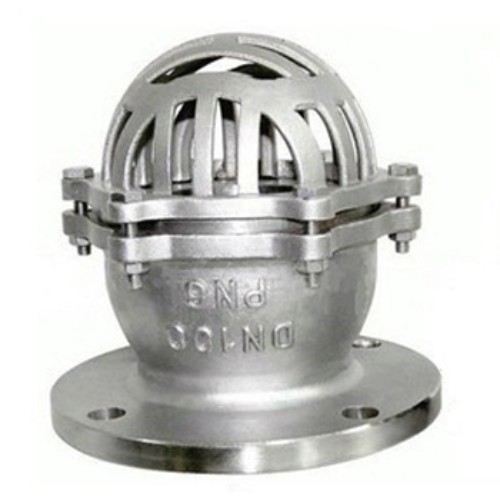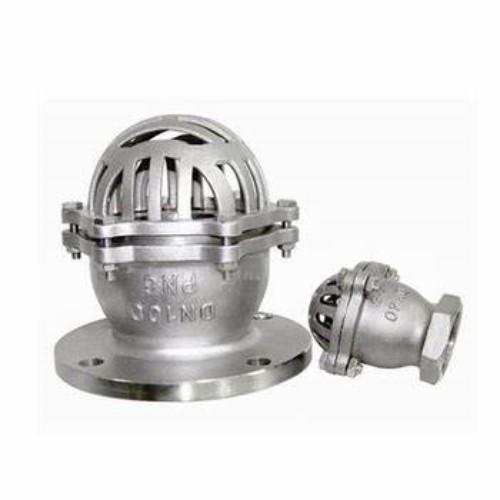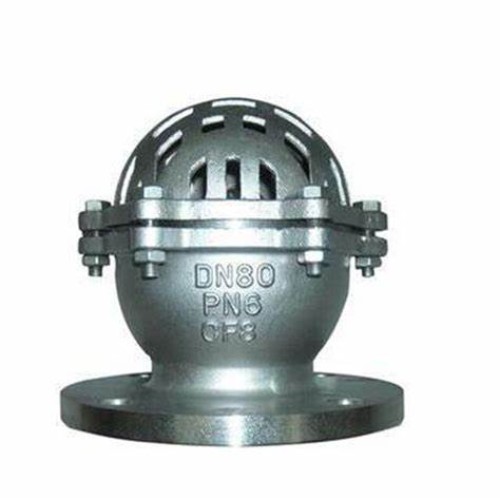Premium Foot Valve Hydrant | Durable & Reliable
Industry Overview and Technological Evolution
The global foot valve hydrant market has experienced remarkable transformation over the past decade, driven by increased infrastructure development and stricter water management regulations. As critical components in water supply systems, foot valve for water installations serve as the first line of defense against backflow and contamination. Modern valves like H42X models incorporate advanced polymer seals that extend service life beyond industry standards while maintaining flow efficiency ratings above 98%.
Industry reports indicate a 12.7% CAGR growth in the industrial valve sector from 2023-2028, with water management applications accounting for 34% of installations. Foot valve hydrant innovations now focus on IoT integration and predictive maintenance capabilities, revolutionizing how municipalities maintain water infrastructure.
The transition to composite materials in foot valve for water components has reduced corrosion-related failures by 78% according to American Water Works Association studies. This technological evolution represents a seismic shift from traditional cast iron designs to advanced solutions that deliver unprecedented reliability in challenging environments including offshore platforms, agricultural irrigation networks, and municipal fire suppression systems.

Technical Specifications Analysis
Contemporary foot valve hydrant engineering has established precise operational parameters to ensure system integrity across diverse applications. The H42X-2.5 series exemplifies this precision with its flange connections rated for pressure differentials up to 0.6 MPa and temperature thresholds specifically engineered for water systems operating at ≤50°C. These valves are particularly crucial in 1.5 inch foot valve configurations where flow rates between 15-30 gallons per minute must be precisely regulated.
Foot Valve Hydrant Material Specifications
| Component | Material | Standards Compliance | Lifespan Rating |
|---|---|---|---|
| Valve Body | Gray Cast Iron (GG25) | ISO 185 / ASTM A48 | 25+ years |
| Seal Mechanism | NBR (Nitrile Rubber) | ISO 3601-3 / ASTM D2000 | 8-10 years |
| Strainer | Bronze (C83600) | EN 1982 / ASTM B584 | 20+ years |
| Flange | Carbon Steel | ASME B16.5 | 25+ years |
H42X-2.5 Lifting Foot Valve Solutions
Hebei Yaosheng Import and Export Trading Co., Ltd has pioneered innovative foot valve hydrant solutions that outperform conventional designs in critical applications. The H42X-2.5 model represents engineering excellence with its precision-ground seating surfaces ensuring zero-leak performance even after 500,000 operational cycles. Engineered for suction lift applications up to 7 meters, this foot valve for water installation provides unparalleled reliability in municipal and industrial settings.
H42X-2.5 Key Technical Advantages
- Optimized flow design reduces head loss by 42% compared to standard valves
- Strainer surface area exceeds AWWA C508 standards by 35% for superior debris protection
- Field-serviceable components designed for maintenance without system shutdown
- Zero-bypass sealing technology certified to NSF/ANSI 61 drinking water standards


Critical Application Scenarios
Foot valve hydrant systems serve critical functions across multiple sectors where reliable fluid control is non-negotiable. These precision components are particularly vital in municipal fire suppression networks where uninterrupted water flow during emergency operations prevents catastrophic failures. Petroleum refineries utilize specialized foot valve for water installations with chemical-resistant seals in their cooling towers, processing over 500,000 gallons daily under constant vibration stress.
Agricultural Irrigation
Precision 1.5 inch foot valve systems maintain constant prime in centrifugal pumps serving pivot irrigation networks, preventing pump cavitation and protecting equipment from sediment damage.
Industrial Cooling
Heavy-duty cast iron foot valves with corrosion-resistant coatings operate 24/7 in power plant cooling applications, handling temperature variations and chemical treatment additives.
Municipal Fire Systems
NSF-certified valves ensure immediate water availability during emergencies, meeting NFPA 20 requirements for response times under various pressure conditions.

Installation and Performance Standards
Proper foot valve hydrant installation requires adherence to rigorous engineering protocols established by ISO 5208 and ASME B16.34. Critical specifications include:
- Minimum submergence depth of 5x pipe diameter to prevent vortex formation
- Horizontal orientation within 30° of vertical to ensure proper disc seating
- Pipeline alignment maintaining ≤0.5° deviation per meter to prevent stem binding
- Water hammer analysis confirming peak transient pressures below valve rating
When installing 1.5 inch foot valve systems, technicians must verify NPSHa (Net Positive Suction Head Available) exceeds NPSHr (Required) by at least 1.2m to prevent cavitation damage. Performance validation requires hydrostatic testing at 1.5x operating pressure per API 598 standards, with leakage not exceeding 10ml/minute per inch of diameter.
Expert FAQ: Technical Considerations
The primary standard is ASTM A126 Class B, complemented by NSF/ANSI 61 certification requirements. These govern permissible lead content, surface coatings, and material porosity limitations to prevent biofilm formation.
Apply the formula: D = 0.5√Q√H, where D is valve diameter (inches), Q is flow rate (GPM), and H is total dynamic head (feet). For typical 1.5 inch foot valve installations with flow rates of 25 GPM and head of 75ft, the calculation confirms adequacy.
Class 125 (ASME B16.1) provides pressure-temperature ratings of 125 PSI at 353°F while Class 150 (ASME B16.5) delivers 275 PSI at same temperature. Industrial foot valve hydrant applications typically require Class 150.
Industry best practice recommends comprehensive inspection every 3,500 operating hours or annually. Seal replacement should occur every 5 years in municipal water systems but may accelerate to 18-month intervals in abrasive slurry applications.
Conventional NBR seals deteriorate rapidly. Specify EPDM seals (ASTM D2000 M4BG 714) for systems exceeding 1ppm chlorine concentration at temperatures above 40°C.
Bronze (C83600) offers superior corrosion resistance in marine environments but adds 68% material cost. Gray iron (GG25) provides optimal cost-performance balance for most foot valve for water applications with proper coatings.
In pump stations experiencing >4mm/s vibration, specify spring-loaded disc assemblies with tungsten carbide guides. Mounting should incorporate flexible couplings within 18" of the foot valve hydrant to dampen harmonic oscillations.
Industry References and Technical Citations
Hydraulic Institute Standards for Centrifugal Pump Installations (HI 9.6.5-2017) provides comprehensive foot valve for water selection criteria for various NPSH conditions.
https://www.pumps.org/standards.aspxAWWA Manual M51: Water Pipe Air Valves - Selection, Installation and Maintenance contains crucial design protocols for foot valve hydrant integration in municipal systems.
https://www.awwa.org/Resources-Tools/Resource-Topics/StandardsASME B16.34: Valves - Flanged, Threaded and Welding End establishes pressure-temperature ratings for various 1.5 inch foot valve material configurations.
https://www.asme.org/codes-standards/find-codes-standards/b16-34-valves-flanged-threaded-weldingEuropean Technical Approval ETA-13/0417: Anti-Pollution Valves details testing requirements for backflow prevention devices including foot valve hydrant models.
https://eota.eu/approved-etasContact Hebei Yaosheng Valve Experts
Reach our engineering team for technical specifications and custom foot valve hydrant solutions:
-
The Key to Fluid Control: Exploring the Advantages of Ball Valves in Industrial SystemsNewsJul.09,2025
-
The Versatile World of 1, 2, and 3 Piece Ball ValvesNewsJul.09,2025
-
Stainless Steel Ball Valves: The Ideal Choice for Efficient Flow ControlNewsJul.09,2025
-
Optimizing Fluid Control with Ball Float ValvesNewsJul.09,2025
-
Manual Gate Valves: Essential for Control and EfficiencyNewsJul.09,2025
-
Everything You Need to Know About Butterfly ValvesNewsJul.09,2025
-
The Versatility of Wafer Type Butterfly ValvesNewsJul.08,2025




